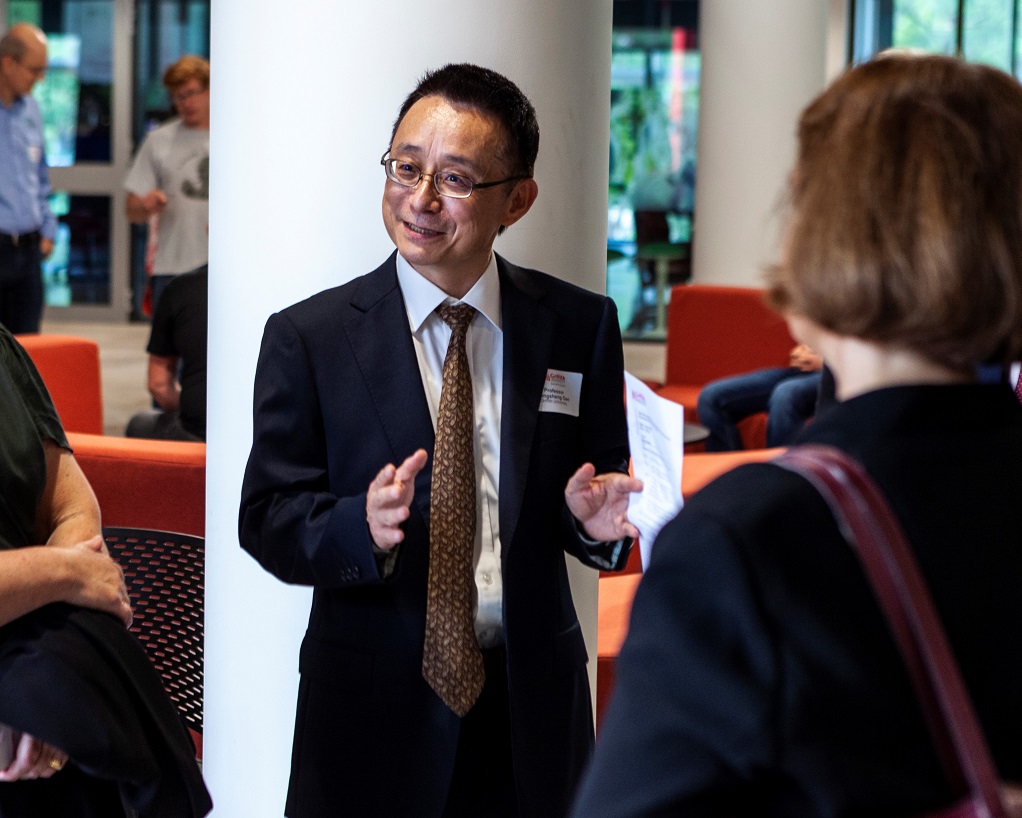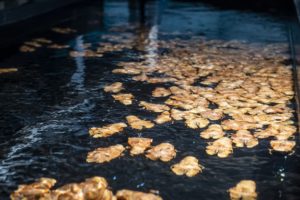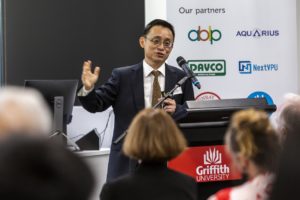
Driving farming production and disease prevention through artificial intelligence technologies is the key aim of an Australian Research Council Research Hub, which has been officially unveiled at the hub’s host site at Griffith University.

Senator the Honourable Amanda Stoker, Assistant Minister to the Attorney-General, Assistant Minister for Women, Assistant Minister for Industrial Relations, and acting ARC Chief Executive Officer Judi Zielke PSM joined Griffith University Vice Chancellor and President Professor Carolyn Evans, Pro Vice Chancellor (Sciences) Professor Andrew Smith and Hub Director to officially launch the .
The hub received Australian Government funding of $5 million through the Australian Research Council Industrial Transformation Research Program in 2018.
Professor Gao said the Hub combined world-leading capabilities in image processing, machine learning, robotics, and software, with additional input from experts in agronomy, biology, water use, and farming technology.
“We want to help growers grow better produce and lower their costs using the wealth of technologies that we have at our disposal,” Professor Gao said

“The Hub is now performing on a larger scale to help transform the agriculture and aquaculture industries into highly efficient productions.”
As a direct result of the research carried out within the Hub, new technology has been introduced into both testing and production environments at Australian Bay Lobster Producers Limited, Sunray Strawberries, and Davco Agriculture, improving efficiency and revolutionising the way business is carried out.
Australian Bay Lobster Producers Limited
- The Hub has integrated machine vision and robotics technology into many aspects of this world-first lobster farming facility at Chinderah and is an integral part of the company’s business strategy;
- Continuous, automated monitoring of larvae tanks allows for precision feeding, optimising growth rate of the larvae and significantly reducing mortality, while also reducing labour costs for this critical stage of lobster development;
- This technology is already in trial in a full production environment and has proven to be extremely effective in significantly improving larval stage output.
Sunray Strawberries
- The DeepBerry automated monitoring system uses both visual and infrared imaging to accurately detect ripeness, bruising, fungus, fruit size, shape, and foreign objects, and can process more than 7000 punnets per hour;
- Testing has shown that this system has a higher accuracy and greatly improved consistency when compared to current human quality checking, leading to increased quality and consistency of fruit and reduced labour costs;
- The Hub has also developed a mobile phone app for remote monitoring of strawberry quality, allowing consistent quality checking to occur at various stages of the supply chain including picking, packing, and distribution points.

Davco Agriculture
- The Hub has made progress towards increasing the efficiency of sugarcane planting, by accurately monitoring planting rate and billet quality in a live production environment;
- Using this technology, cane planters can monitor and geolocate length of billets, nodes per billet as well as planting densities including detecting planting gaps;
- Consistent plant spacing also limits weeds and reduces moisture loss from soil, giving improved environmental outcomes with reduced water consumption and pesticide use.
- The Hub’s aim is to integrate this technology into new planting machinery, revolutionising the industry both within Australia and internationally.
While the Hub is hosted by Griffith University, it unites world-class, multi-disciplinary teams from partner organisations including the University of Sydney, the University of Adelaide, the University of Western Australia, Monash University and Deakin University, the CSIRO, and industry partners comprising Davco Agriculture, Sunray Strawberries, Next VPU, Australian Bay Lobster Producers Limited and Aquarius Technologies.








